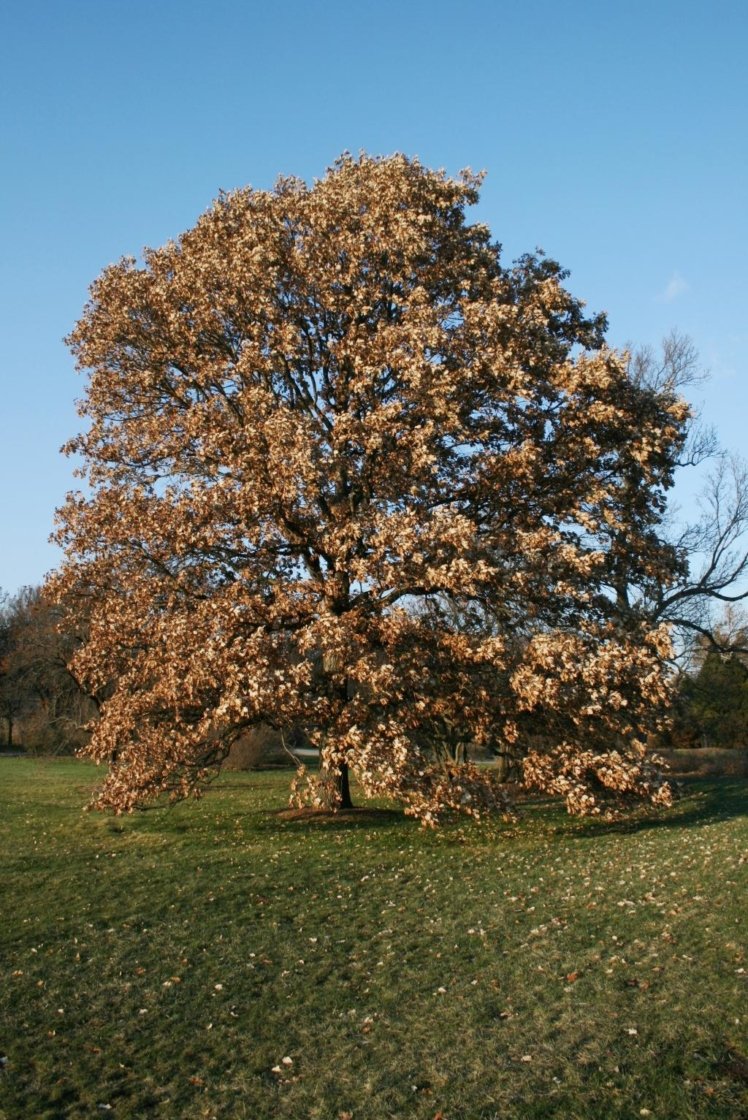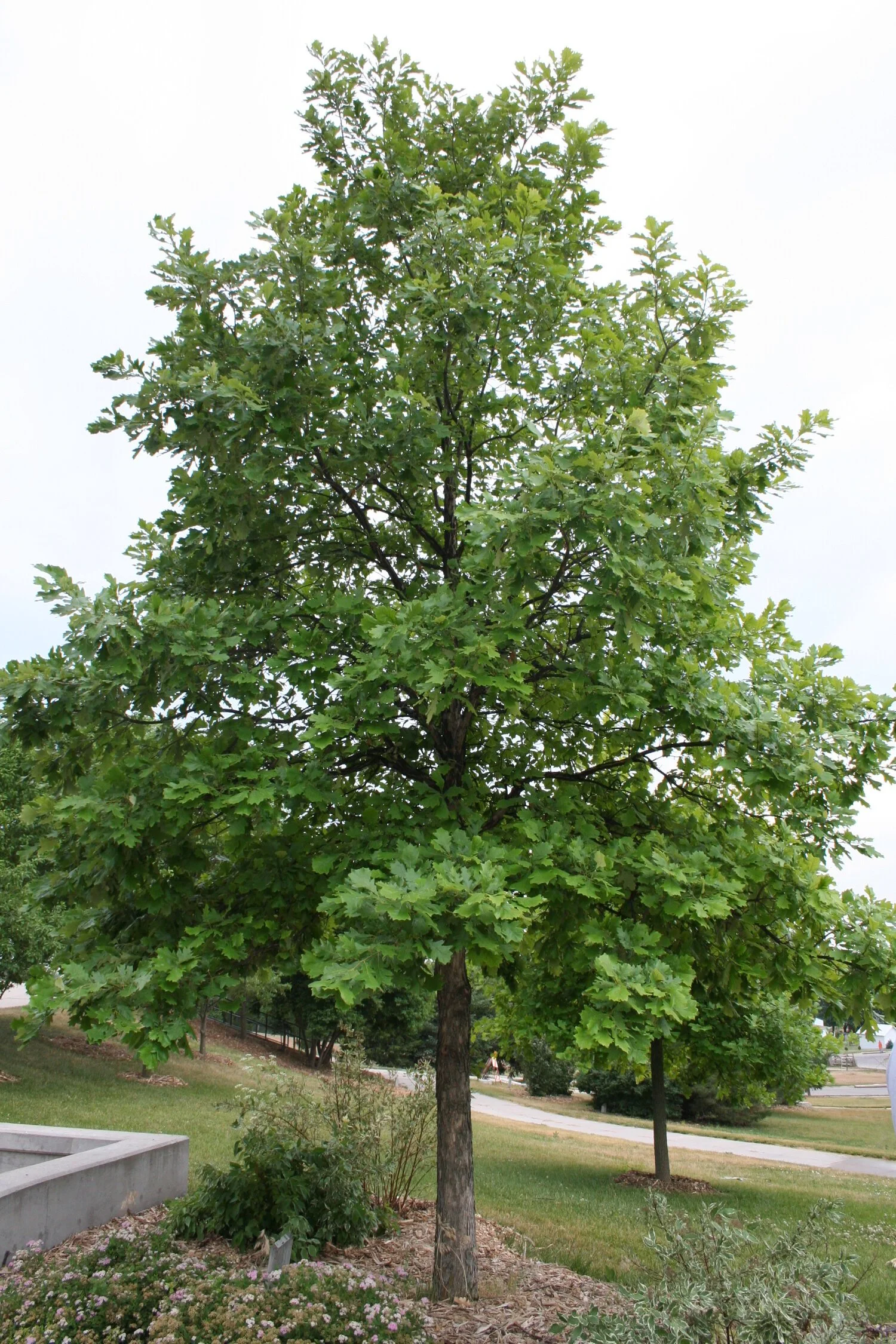Swamp White Oak
Quercus bicolor. Swamp white oak is a long-lived North American species of medium-sized. It is a common element of America's north central and northeastern mixed forests and be found in variety of habitats, especially lowlands. It is one of the more important white oaks for lumber production and forms hybrids with bur oak where they occur together in the wild. It grows rapidly and can reach 60 to 80 feet tall.
Swamp white oak is one of the easiest oaks to transplant and is a frequent choice for use in urban areas and landscape uses. Plant in full sun and avoid high pH soils or plants may develop chlorotic (yellowing) leaves. Prune oaks in the dormant season to avoid attracting beetles that may carry oak wilt.
Good crops of swamp white oak occur every 3 to 5 years, with light crops during intervening years. Like their cousin, the white oak, they are an important food source and have immense wildlife value. The minimum seed-bearing age is 20 years, optimum age is 75 to 200 years, and maximum lifespan is usually 300 years. Because the seed of swamp white oak is not dormant, it germinates soon after falling. Seed collections should be made soon after ripening in order to delay early germination. These acorns are difficult to store without germination or loss of viability occurring.
Sold as bare root trees AVG 24” tall.
Quercus bicolor. Swamp white oak is a long-lived North American species of medium-sized. It is a common element of America's north central and northeastern mixed forests and be found in variety of habitats, especially lowlands. It is one of the more important white oaks for lumber production and forms hybrids with bur oak where they occur together in the wild. It grows rapidly and can reach 60 to 80 feet tall.
Swamp white oak is one of the easiest oaks to transplant and is a frequent choice for use in urban areas and landscape uses. Plant in full sun and avoid high pH soils or plants may develop chlorotic (yellowing) leaves. Prune oaks in the dormant season to avoid attracting beetles that may carry oak wilt.
Good crops of swamp white oak occur every 3 to 5 years, with light crops during intervening years. Like their cousin, the white oak, they are an important food source and have immense wildlife value. The minimum seed-bearing age is 20 years, optimum age is 75 to 200 years, and maximum lifespan is usually 300 years. Because the seed of swamp white oak is not dormant, it germinates soon after falling. Seed collections should be made soon after ripening in order to delay early germination. These acorns are difficult to store without germination or loss of viability occurring.
Sold as bare root trees AVG 24” tall.
Quercus bicolor. Swamp white oak is a long-lived North American species of medium-sized. It is a common element of America's north central and northeastern mixed forests and be found in variety of habitats, especially lowlands. It is one of the more important white oaks for lumber production and forms hybrids with bur oak where they occur together in the wild. It grows rapidly and can reach 60 to 80 feet tall.
Swamp white oak is one of the easiest oaks to transplant and is a frequent choice for use in urban areas and landscape uses. Plant in full sun and avoid high pH soils or plants may develop chlorotic (yellowing) leaves. Prune oaks in the dormant season to avoid attracting beetles that may carry oak wilt.
Good crops of swamp white oak occur every 3 to 5 years, with light crops during intervening years. Like their cousin, the white oak, they are an important food source and have immense wildlife value. The minimum seed-bearing age is 20 years, optimum age is 75 to 200 years, and maximum lifespan is usually 300 years. Because the seed of swamp white oak is not dormant, it germinates soon after falling. Seed collections should be made soon after ripening in order to delay early germination. These acorns are difficult to store without germination or loss of viability occurring.
Sold as bare root trees AVG 24” tall.




